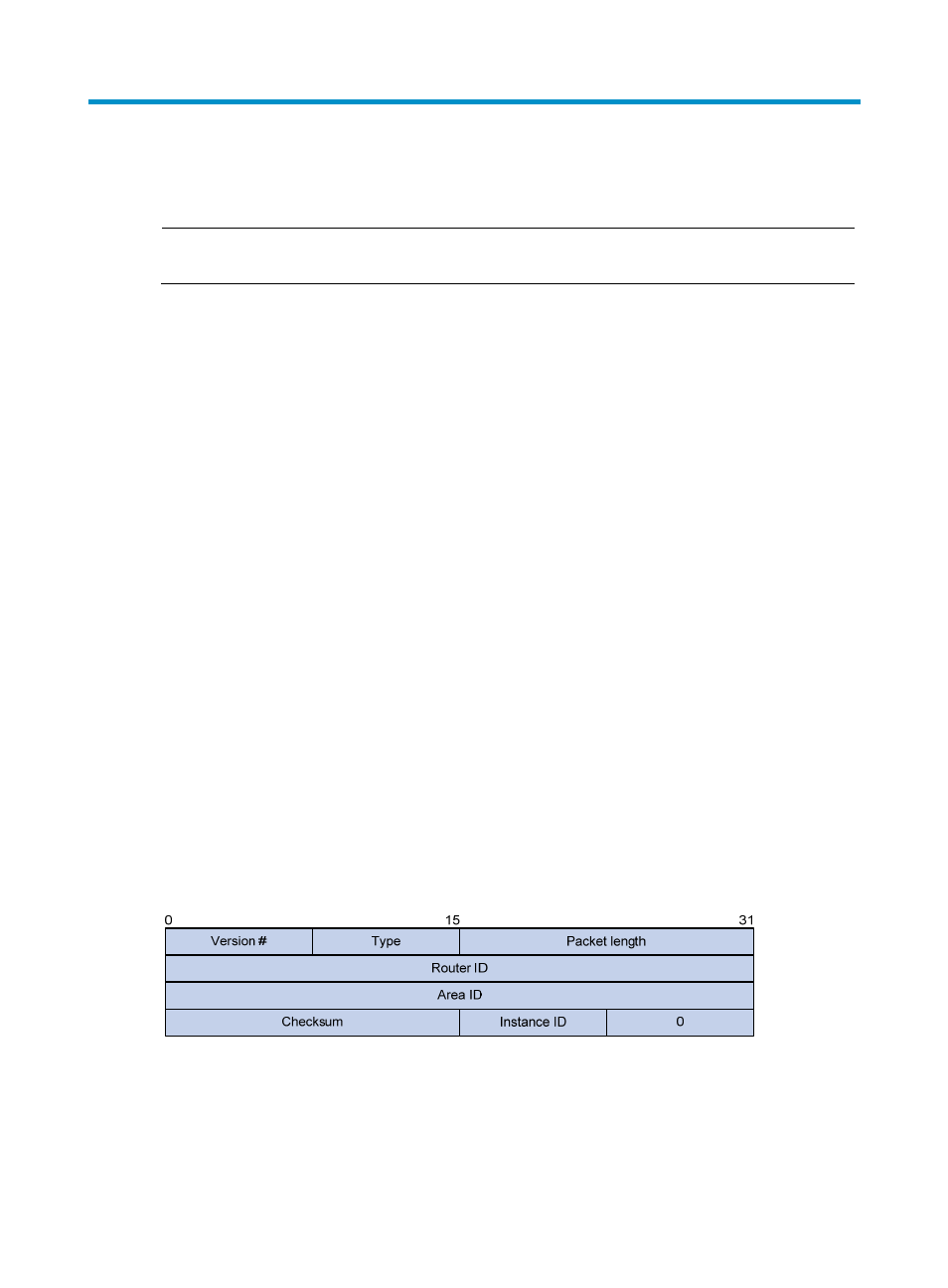Configuring ospfv3, Introduction to ospfv3, Ospfv3 overview – H3C Technologies H3C SR8800 User Manual
Page 311: Ospfv3 packets

295
Configuring OSPFv3
NOTE:
The term
router in this document refers to both routers and Layer 3 switches.
Introduction to OSPFv3
OSPFv3 overview
Open Shortest Path First version 3 (OSPFv3) supports IPv6 and complies with RFC 2740 (OSPF for IPv6).
OSPFv3 and OSPFv2 have the following similarities:
•
32 bits router ID and area ID
•
Packets, including Hello, DD (Data Description), LSR (Link State Request), LSU (Link State Update),
LSAck (Link State Acknowledgment)
•
Mechanism for finding neighbors and establishing adjacencies
•
Mechanism for LSA flooding and aging
OSPFv3 and OSPFv2 have the following differences:
•
OSPFv3 runs on a per-link basis, instead of on a per-IP-subnet basis.
•
OSPFv3 supports multiple instances per link.
•
OSPFv3 identifies neighbors by Router ID, and OSPFv2 by IP address.
OSPFv3 packets
OSPFv3 has the following packet types: hello, DD, LSR, LSU, and LSAck. These packets have the same
packet header, which is different from the OSPFv2 packet header. The OSPFv3 packet header is only 16
bytes in length, and has no authentication field, but is added with an Instance ID field to support VPN per
link.
Figure 108 OSPFv3 packet header
Major fields:
•
Version #—Version of OSPF, which is 3 for OSPFv3.
•
Type—Type of OSPF packet; types 1 to 5 are hello, DD, LSR, LSU, and LSAck respectively.
•
Packet Length—Packet length in bytes, including header.